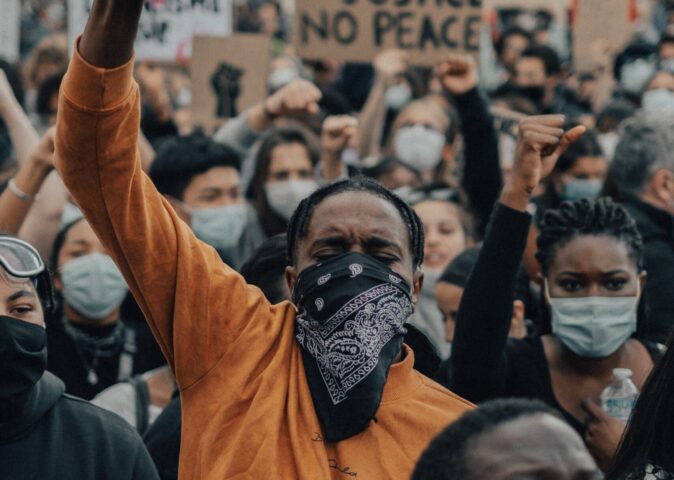The United States is not as polarized and angry as you think it is. The shrill voices that dominate discussions online and in the press are actually a very small percent of the US population. The Human Empathy Project is designed to give a voice to the rest of the country, people who are far more reasonable and willing to compromise than those you hear online and in the news. We invite you to join us and get to know the real America, through the voices of regular people.
Why do we need a website on human empathy?
The product that powers the Human Empathy Project, UserTesting, helps companies get super-fast public feedback on just about anything: websites, apps, marketing messages, etc. You specify what you want to test, and within a few hours you get video of your customers reacting to it. UserTesting processes more than 130,000 of these feedback videos every month.
Lately, we’ve been using that same system to get feedback from average people on hot-button national issues, such as the pandemic and the presidential election.
We learned two important things:
- First, it turns out regular people are very willing to discuss their views in a video test. Most of them welcome the opportunity to be heard.
- Second, the stories we heard from regular people were strikingly different from the narrative we all see on social media and in the press. The people we heard from were less polarized, more thoughtful, and more willing to compromise than the voices that dominate the national debate today. It was like we’d slipped into a parallel universe in which Americans were still willing to listen to one another and work together to help the country.
This was a puzzle. The UserTesting platform is designed to gather feedback from average people chosen randomly, so we couldn’t understand why we were getting results so different from the things we see online. We investigated further, and it turns out there was nothing wrong with our methodology — we were hearing from the true mainstream of the country, one that is vastly under-represented online and in the press.
We also found that we’re not the first people to notice this disconnect. For example, a nonpartisan research organization called More in Common did a very extensive survey of Americans in 2019 and concluded:
“Today, millions of Americans are going about their lives with absurdly inaccurate perceptions of each other. Partisan media consistently elevates the most extreme representations of ‘them’…. This creates a false impression that outliers are somehow representative of the majority….Despite America’s profound polarization, the middle is far larger than conventional wisdom suggests, and the strident wings of progressivism and conservatism are far smaller…. Yet both sides have absorbed a caricature of the other.”
Hidden Tribes report by More in Common, 2019 (link)
How did we get so out of touch with each other?
There’s a toxic feedback loop between social media and news media. It works like this:
Anyone who runs an online forum can tell you about the 1% rule: In an online forum, the vast majority of the content (messages or whatever else gets posted) is created by about 1% of its users (link). What’s not often discussed is that those 1% are not a representative sample of the rest of the forum’s membership. Something unusual makes them far more motivated than the average visitor. They may be more interested in the subject, they may be trying to become influencers, or they may be working through other issues that cause them to reach out. Whatever the cause, they’re not typical of the average visitor to the forum.
In most online forums, this bias doesn’t have a big negative effect. It means the reviews on a travel or restaurant review site will be written by people who are especially enthusiastic about traveling or eating out, but that’s OK. However, it has a profound effect on discussions about social issues and politics. The people who post heavily on those subjects tend to be extremists, the angriest and most polarized members of society.
For example, just 2% of the US population writes 97% of the Twitter posts on national politics, according to the nonpartisan Pew Research Center (link). Those 2% “political tweeters” are not representative of the country as a whole. Pew found they’re more extreme in their politics and are more likely to be hostile toward members of the opposing party.

This isn’t a conspiracy theory. We’re not saying 2% of the population got together and decided to hijack the discussion. It’s just a structural feature, an inevitable outcome of the way social media works. Similar self-selection biases happen in every social media platform. Add them together, and the voices we hear on social media are systematically far more polarized, shrill, and confrontational than the population as a whole.
This problem is compounded when the rest of us treat social media as an opinion poll. How often have you seen a news story about an issue that’s trending on social media, or someone who posted something offensive online? Given who writes most of the online posts, there’s always going to be an angry crusade online, and there’s always going to be someone saying something offensive. When we make those incidents into news, we’re misstating what’s happening in the country. The systematic skew isn’t a liberal or conservative thing; it’s both extremes against the middle. Social media and the news media accidentally amplify the voices of the extremes, and play them back to us as if they represented the center of society.
This is breaking down the dialog and compromises that make society livable. More in Common found that about 77% of Americans are in an “exhausted majority” caught between the extremes. They are willing to work together and compromise to solve the country’s problems, but feel intimidated and shouted down by people with extreme views. More in Common wrote:
“We don’t seem to disagree anymore without perceiving another person’s views as stupid, wrong or even evil. We’re being played off each other; and told to see each other as threats and enemies, not Americans just like us but with separate experiences and views. The loudest and most extreme voices get heard, and others just feel like tuning out altogether.”
We need to change the dialog
If the problem is built into social media and the press, how do we solve it? The first step is to get more exposure to regular people. Extreme voices twist our view of the world because we’re not hearing the real views of typical people. If we heard from regular people more often, the extreme stereotypes couldn’t take hold.
The Human Empathy Project is trying to help. Using the UserTesting system, we’re canvassing the rest of the country who don’t dominate the discussion online, asking their views and highlighting their voices. Through videos in which they get to do the talking, you’ll understand where Americans actually agree and disagree, and the reasons why. Sometimes we’ll dig into the reality behind an issue that’s generating controversy. Sometimes we’ll just feature someone talking about their life and challenges, so you can get a better understanding of other Americans.
We think you’ll find that your real neighbors are far more reasonable and thoughtful than you realized. You’ll see that we don’t always agree, but that there are usually understandable reasons behind those disagreements, the sort of things you could work through over a cup of coffee. And we promise we won’t take sides against anyone — except maybe the people who tell you that the other side is pure evil and that you have to destroy them.
Please join us, listen to each other, and get to know the real America.
(To be notified of future posts, you can follow us on Twitter or Instagram.)
Although the Human Empathy Project is powered by UserTesting, the opinions expressed in this site are those of the authors and do not represent the official policy or positions of the company.
Photo by Harrison Haines from Pexels

